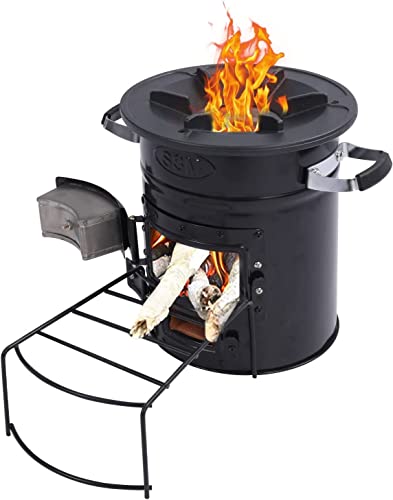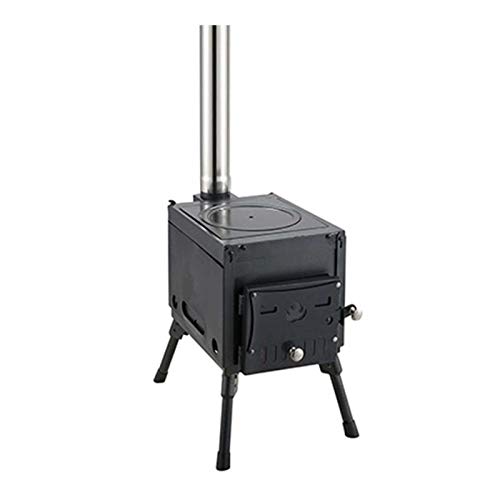 How to Properly Operate a Woodburning Stove
How to Properly Operate a Woodburning Stove
Wood stoves are a fantastic method of heating your home. They’re also inexpensive. Smoke from wood stoves can be dangerous to your health. It is essential to know how these appliances function and to operate them properly.
 Many modern stoves rely upon a catalytic or secondary combustion to control their emissions. However, older stoves and open fires generate large amounts of particulates.
Many modern stoves rely upon a catalytic or secondary combustion to control their emissions. However, older stoves and open fires generate large amounts of particulates.
The firebox
The firebox is the heart of any fireplace system. It’s where you create a fire to heat your home and provide ambiance. It’s a simple concept, but there are many important details that must be accounted for to keep your wood burning stove safe and efficient.
The simplest way to think of the firebox is that it’s a box-like combustion chamber with walls and a door. Most fireplaces have either prefabricated metal or a masonry fireboxes. The type of firebox you choose will depend on your preference as well as the type of fireplace you own.
Most wood-burning fireplaces make use of a constant flow of air to create the flame and burn fuel. Fresh air is drawn into the stove through adjustable dampers that are located within the doors of the stove. This allows the fuel to be properly burned and also helps reduce the toxic gases generated by unburnt or incomplete combustion. The exhaust gases will be drawn up the chimney and away from your home.
Modern stoves with catalytic secondary combustion use a special catalyst that reburns the unburned gasses to produce additional heat. This results in a cleaner and less polluting exhaust than traditional wood stoves with no secondary combustion. Modern non-catalytic stoves are also available, but they’re usually less efficient than stoves with secondary combustion catalytically.
Some fireplaces with wood burning have a backboiler, which can be used for space heating as well as water heating. These stoves are referred to as “hybrids” or “combination”. They have been in use since the early 20th century.
Wood burning stoves can only be used with well-seasoned wood. Freshly cut (green) wood has an extremely high moisture content that can lead to low flue temperatures and a lot of creosote build-up in the chimney. This can lead to chimney fires that destroy the stove and can even be dangerous to your family’s health.
If you are looking for an expert who can examine your wood-burning stove, or make repairs to your firebox, make sure that the chimney professional you hire has CSIA certification and also has customer testimonials on their site. Find out their rates and the type of work they perform.
The pipe for ventilation
Ventilation is a must for wood stoves to help remove fumes and keep the house healthy and warm. Ventilation is essential to remove carbon monoxide and nitrogen dioxide from the process of combustion. It also helps reduce air pollution and heat loss outside. Gas, pellet and wood stoves have different requirements for venting to accommodate the different ways they operate. It is important to maintain the stove’s venting systems on an annually to ensure safety and efficiency.
The ventilation system consists of the firebox as well as the ventilation pipe. The chimney and the vent pipe are used in conjunction to create draft, bringing smoke from the stove through the fireplace and into the outside air. The differences in temperature and densities between the hot wood smoke and the cold outside air creates draft. The more hot the smoke, the better it can rise up the chimney and ventilation pipe.
The majority of modern wood defra stove burners (Yauld-Cyclamen-hfz5mh.mystrikingly.com) stoves are certified as low-emission units by EPA. They produce less pollution than older models which contribute to global warming and other environmental concerns. The majority of modern stoves have built-in pollution controls to limit the amount they emit while ensuring that the carbon emissions are burned in an efficient manner.
Older stoves with open flues create more carbon dioxide. This is a poisonous gas that is toxic and should not be released into your home. Carbon monoxide can be a source if your chimney is dirty or if there is inadequate ventilation. Installing carbon monoxide alarms inside your house is therefore important.
Before installing a new or used wood burning stoves wood stove, take note of the distance from the place where the stove is placed on the floor to the chimney opening in the wall or ceiling. By multiplying this measurement by 2 will provide you with the minimum length of stovepipe you require. Single-wall or double-wall stovepipes and ensure that you have adequate clearance from combustibles.
The stove’s air vent must be adjusted when it first gets lit until a proper flame is established within the stove and its combustion process has stabilised. It is also a good idea to avoid using wood briquettes in the stove, since they are not logs, and may contain volatile chemicals that can cause the air vent to malfunction and lead to a risky situation.
The chimney
The chimney may not seem like something that people give a lot of thought to, but it’s an intricate system that requires care and attention. From top to bottom, the chimney is comprised of a number of important components that are crucial to ensure that your stove functions effectively and safely.
The wood burning stove’s combustion gases are emitted to the outside by the firebox, the vent pipe, and the chimney. This is essential to preventing harmful emissions and also reducing carbon dioxide levels within your home. To accomplish this, the chimney and flue must to be sufficiently hot to remove the gasses out of the fireplace without cooling. This can be accomplished by using a portable wood heater-burning fireplace that has a high heat output and by adding new logs on a regular basis to the fire.
The majority of modern woodburning stoves are designed to operate with a chimney which is higher than older models to achieve a better drafting effect. This can be a problem in the event that your chimney’s height exceeds the maximum height for your area. If this occurs the chimney could compete with the house stack for draft, causing the gases to cool before exiting. This could impede the gas flow and cause creosote accumulation which could pose a fire hazard.
The most common mistake homeowners make is to open the fireplace door and close it frequently. This can adversely affect the combustion. It is essential to keep the door shut as much as possible and only open it when you need to add additional firewood or ash. The door should not be open for long. This allows hot air from the stove to escape, making the logs cooler and more difficult to light.
Other kinds of combustibles may create higher emissions, or even a chimney fire. Woodburning stoves were developed and optimized to burn wood for fire. They are not suitable for other types of combustibles.
The flu
To ensure proper air flow for a woodburning stove, it requires flues that are the right size. The flue should be at a minimum 25 percent larger than the stove pipe that connects the chimney and stove to allow for sufficient smoke flow. A wood stove must be placed on a non-combustible hearth with a clear space in front of the fireplace opening.
Modern stoves feature a feature called catalytic combustor which can help reduce the amount of harmful by-products which are released into the chimney. This feature can also assist to improve the efficiency of wood stoves by burning a fire that generates more heat and emits less. Making use of other types of combustibles, other than firewood however, can result in problems like lower efficiency and more emission levels.
It is essential to use dry or seasoned wood when burning wood burning stoves uk in your fireplace or stove. If your wood isn’t well-seasoned or dried, it will release a large amount of water vapor into your chimney. This can result in low flue temperatures and even a chimney fire.
Another way to prevent the possibility of a chimney fire is to have a professional inspect and clean your flue system on a regular basis. This should include the stovepipe, chimney and the chimney itself to ensure that everything is in good working order.
A dirty flue and stove could result in a poor chimney draft that could result in carbon monoxide being released into your home. This can be dangerous to your family members and you should never allow it to happen.
A good rule of thumb is to have a professional chimney sweep sweep your stove and chimney once per year. This will help keep the stove and chimney operating efficiently.
